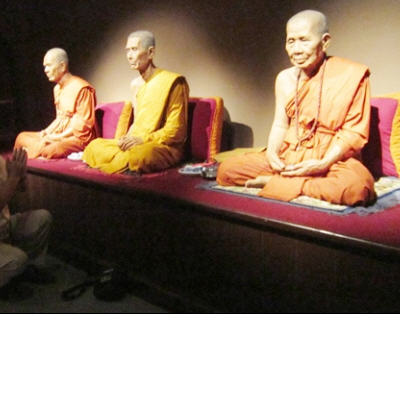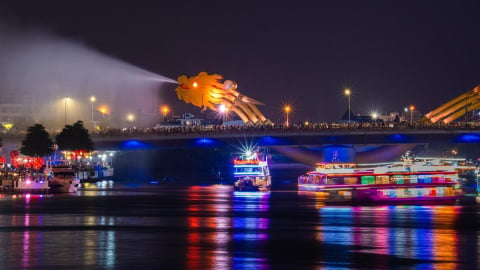From the capital Bangkok, on the way to visit the famous Kawai Bridge, crossing the river bordering the west of Thailand - Myanmar, we were extremely surprised to visit a stop rarely seen in regular tours for Vietnamese tourists: the Wax Museum in Nakhon Pathom province.

Most of the statues are life-size and the movements are extremely lively.
Not as famous as the Madame Tussauds system worldwide, but the Thai wax museum (English name is The Thai Human Imagery Museum) will certainly attract tourists because of its very unique features.
On the lush fruit garden, more than 2 hectares wide, people built a showroom with sophisticated Thai architectural style, but inside is very modern interior and professional, enthusiastic staff.

Wax statue of Queen of Thailand
Besides the exhibition halls displaying statues of world celebrities such as Lincoln Abraham (USA), Mahatama Gandhi (India), Winston Churchill (UK) that visitors may have visited in museums around the world, the exhibition halls displaying statues of the Royal dynasties of the Chakri dynasty (reigning Thailand from 1782 to present), famous figures in history and culture such as monks, poets, even fictional characters in literature, and especially the folk activities of the Thai people bring a sense of joy and admiration to visitors.
The idea for the museum came to Duangkaew Phityakornsilp when he saw a visitor to his house hand him a wax apple, which he thought was real and tried to bite. He thought: “If this wax apple can fool people’s eyes, then surely a wax statue can do the same.”
But when starting to make the statue, the artist encountered many difficulties. Thailand has hot and humid weather so the wax easily melts. Dust and pollution can also easily damage the statue's skin. The first statue, which the artist imitated the Thai cultural celebrity, Phra Raij Sangwarabhimon, took only 3 years to sculpt, but it took 10 years to edit and complete.

Children's folk games are a special attraction of the wax museum in Nakhon Pathom province.
The statues here are made by Thai people using fiberglass instead of traditional wax to suit the climate of their country. The body shape, each strand of hair, wrinkles on the skin, hands, feet, the expression of the eyes and the movements are extremely vivid. The arrangement of light in the museum is also an art. The entire museum uses yellow lights, some shining straight down, some shining diagonally... helping the wax statues to be more vivid. The statues are displayed in a diverse and rich way. Some stand alone, but some are arranged together according to a certain theme, and many are arranged together in a large scene.
Today, a team of well-trained artisans are building the sculpture garden in the hope of promoting Thai history and cultural traditions to international friends and future generations.
* Interested visitors can visit the museum at: 43/2 Moo 1, Boromratchachonii Road, Nakhon Pathom Province, Thailand.
* The museum is open 7 days a week, from 9:00 a.m. to 5:30 p.m. On weekends and holidays, it is open until 6:00 p.m.


































